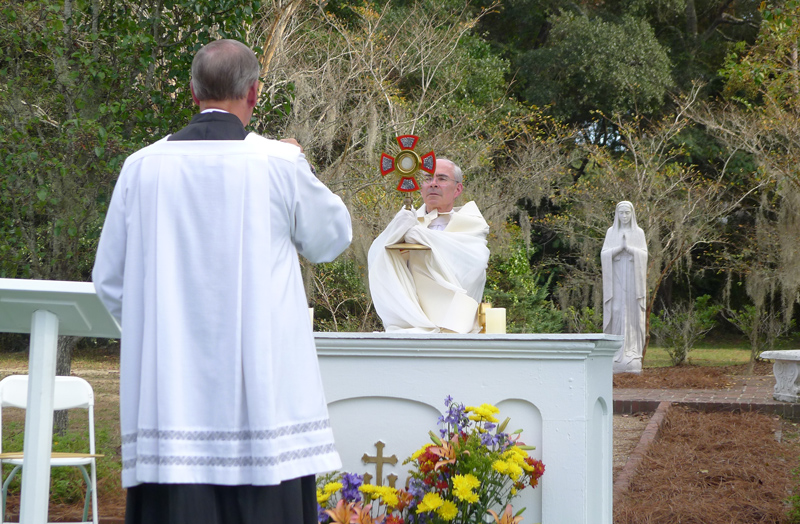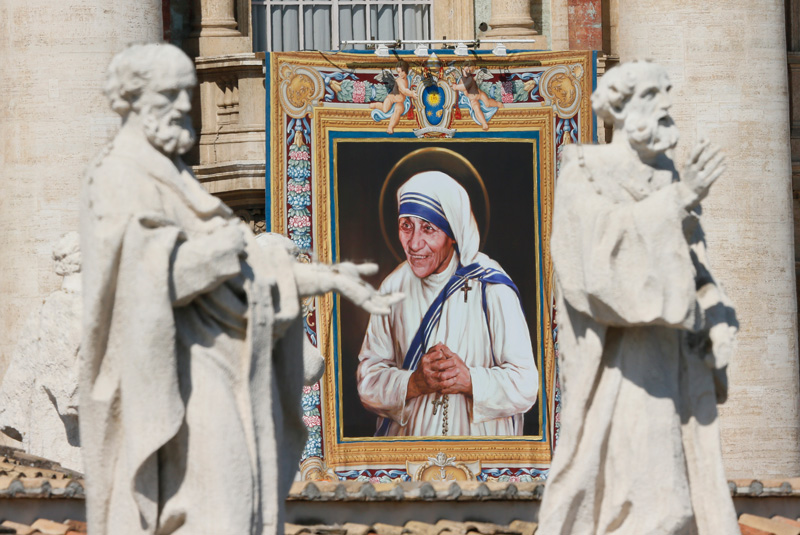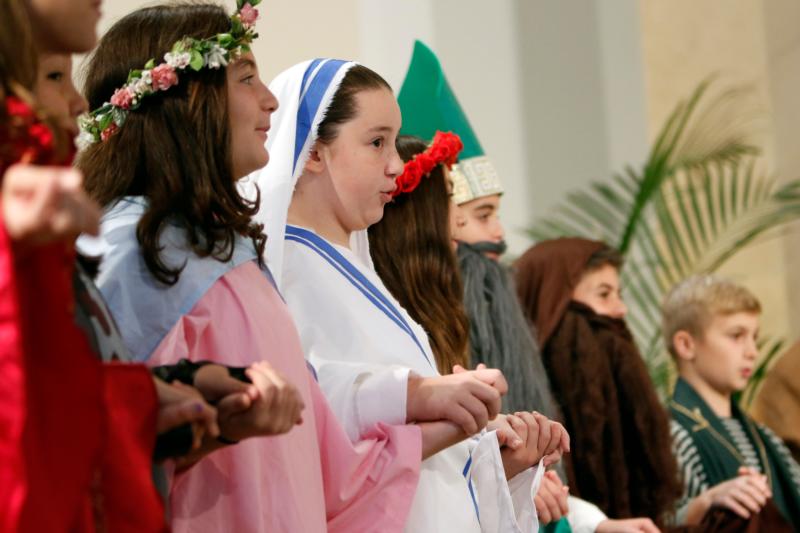
The Solemnity of All Saints is celebrated on the first of November. It was instituted to honor all of the saints, both known and unknown, and, according to Pope Urban IV, to supply any deficiencies in the faithful’s celebration of saints’ feasts during the year.
In the early days of the Church, Christians would honor the anniversary of a martyr’s death at the place of martyrdom. In the fourth century, neighboring dioceses began to interchange feasts, to transfer relics, to divide them, and to join in a common feast; as is shown by the invitation of St. Basil of Caesarea (397) to the bishops of the province of Pontus. Frequently groups of martyrs suffered on the same day, which naturally led to a joint commemoration.
In the persecution of Diocletian, the number of martyrs became so great that a separate day could not be assigned to each, but the Church, feeling that every martyr should be venerated, appointed a common day for all. The first trace of this we find is in Antioch on the Sunday after Pentecost. We also find mention of a common day in a sermon of St. Ephrem the Syrian (373), and in the 74th homily of St. John Chrysostom (407).
At first, only martyrs and St. John the Baptist were honored by a special day in the Liturgical Calendar. Other saints were added gradually, and increased in number when a regular process of canonization was established.
Still, as early as 411 there is in the Chaldean Calendar a “Commemoratio Confessorum” for the Friday after Easter. In the west, Pope Boniface IV on May 13, 609 or 610, consecrated the Pantheon in Rome to the Blessed Virgin and all the martyrs, ordering an anniversary. Pope Gregory III (731-741) consecrated a chapel in the Basilica of St. Peter to all the saints and fixed the anniversary for Nov. 1.
A basilica of the Apostles already existed in Rome, and its dedication was annually remembered on May 1. Pope Gregory IV (827-844) extended the celebration on Nov. 1 to the entire Church. The vigil seems to have been held as early as the feast itself. The octave was added by Pope Sixtus IV (1471-84).
Francis Merseman, from the Catholic Encyclopedia, copyright 1907 / Catholic News Agency
Image: Duccio Di Buoninsegna, “Virgin and Child Enthroned with Saints”. Principle panel of the Maesta alterpiece, from the Siena Cathedral in Siena, Italy, 1308-1311. The artwork depicts Mary enthroned as the Queen of Heaven amidst angels and saints.



